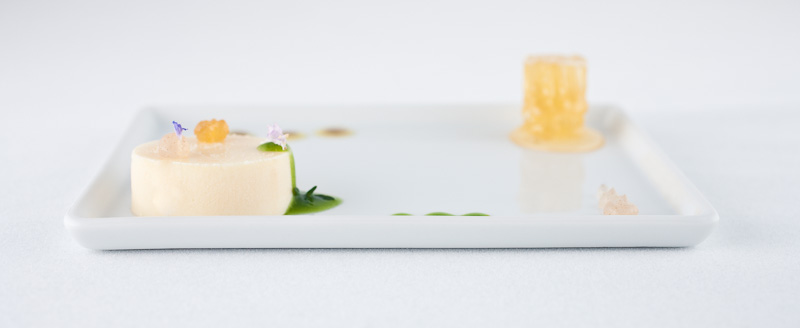
Something Sarah and I picked up in New Zealand was the relatively-simple but incredibly-delicious pairing of cheese with honey. I can’t remember exactly what led us to this, but it wasn’t infrequently that we spent a Sunday morning perusing the cheese wares at Moore Wilson, picked out a nice cheddar, and got a small tub of honey to spread on slices of the cheese. It was a lovely afternoon ritual, paired with wine and Wellington sunshine, and for some reason always strikes me as quintessentially New Zealand.
Several months back we upped our cheese game while hanging out with James and Ali one day (it was the day we were madly in search of Sea Grapes). We kicked off the day by popping into James’ second apartment, also known as Bi-Rite. While smaller in size and scale (and further away from me) than Berkeley Bowl, Bi-Rite gets props for having an aggressive community outreach component that involves lots of cooking events that raise awareness of specific ingredients, the purveyors behind them, and the chefs that work with them. It’s incredibly cool.

While at Bi-Rite on this particular day, James posited the idea of getting some cheese and bread to snack on as we searched for our sea grapes. The employees at Bi-Rite are excitable and incredibly knowledgeable of their wares, and the cheesemonger working that day was no exception. He and James settled on a few cheeses, one of which was an aged gouda imported by Soyoung Scanlan of Andante Dairy. James insisted her own handmade cheeses were equally-amazing and not to be missed, but on this day he was interested in this particular gouda.
When we unwrapped the cheese, I found it peculiar. It was a dark yellow-brown, and peppered with what looked like salt. James said they’re often called “flavor crystals”, and are actually small pockets of calcification that form during the aging process.
Guys, I’d never tasted cheese like this before. It was my most eye-opening experience with cheese…it was firm and nutty and sharp, and the texture was amazing. The little flavor crystals were crunchy…this was the most distinctive and amazing bit of it for me.
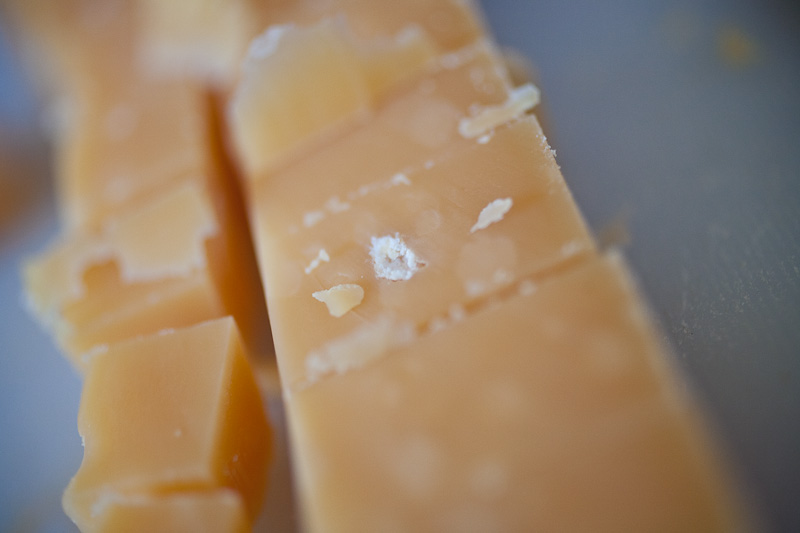
I haven’t had that particular cheese since, but I’m now drawn to aged goudas whenever I’m poking around cheese counters. A week or so ago the idea to try swanking up a cheese dish jumped into my head and I knew I wanted to try an aged gouda. I decided to try co-opting the Brie ‘plaque’ from the Guava dish a while back, to make a sort of gouda ice cream. “Ice cream” is misleading…this thing is a bit more mysterious. When frozen it’s very firm, but as it warms it holds its shape and takes on a custard-y consistency that’s very creamy and luxurious.
I made this by warming some half-and-half, glucose, salt, trimoline, and Stabi 3000, then stirring in small chunks of my gouda (which was from Holland, imported by Cowgirl Creamery). In hindsight this wasn’t all the way awesome…the chunks took FOREVER to melt, and required heating for so long that the mixture took on a slightly-grainy quality and some of the cheese chunks turned gummy. Finely shredding the cheese first would have been a better move. I strained it and moved forward…the mixture tasted great, but wasn’t quite as smooth as the picture I had in my head.

Because I was going for a smooth texture, one of the most interesting bits of the gouda would be lost: the flavor crystals. I knew I wanted to incorporate honey into this dish, so I spent a while trying to think of how I could get some crunch in there. Then it hit me: honey crystals. Honey naturally crystallizes over time into a honey-sugar texture. That crunch might be great to go with this. I started searching for “how to crystallize honey”…this turned up almost nothing. Almost every hit was about how to prevent honey from crystallizing, or how to un-crystallize it!
After a bunch of reading, I learned some stuff about honey: it’s an invert sugar, which means it’s composed predominantly of fructose and glucose. All honey inevitably crystallizes over time, which is not harmful at all. The crystals are just spontaneous alignments of glucose molecules. How fast honey crystallizes is dependent on its ratio of fructose to glucose; more glucose leads to a more rapid crystallization (and smaller crystals), more fructose leads to slower crystallization (and larger crystals).
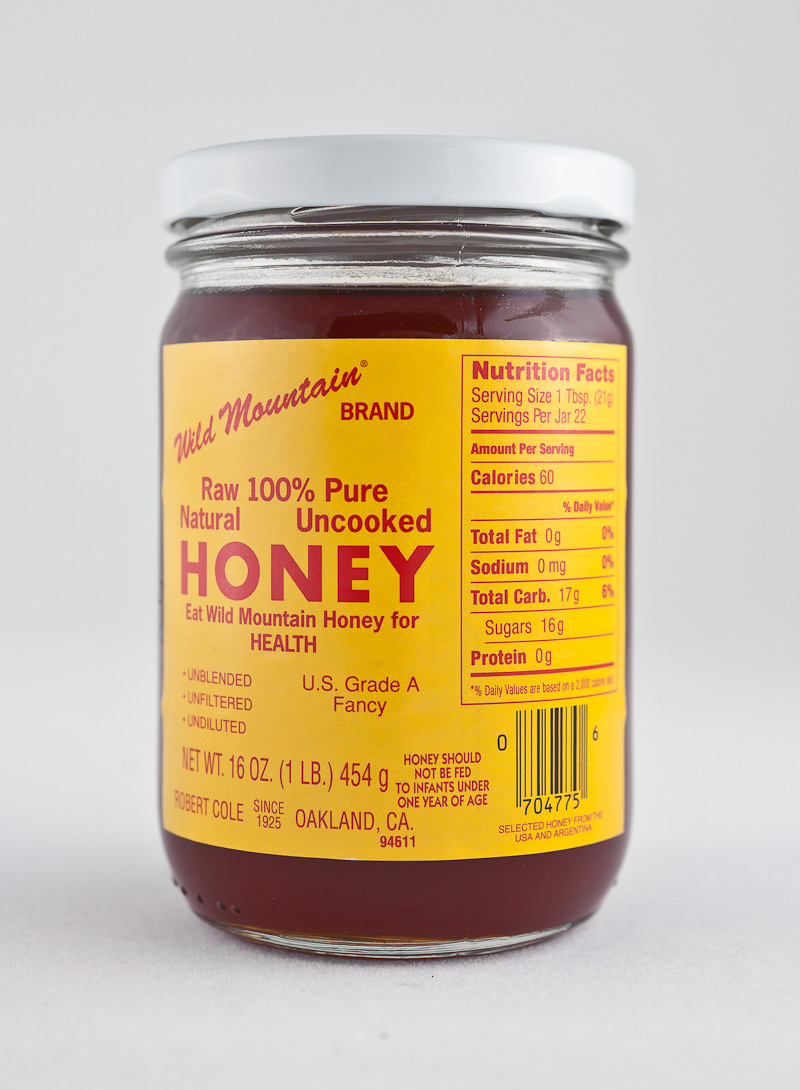
Hm. I wanted large crystals. So I wondered if there was a way for force crystallization in a reasonable amount of time. When I was a kid, I was fascinated by growing crystals. I did it all the time. The idea is simple: heat some water and supersaturate it with a crystalline substance by dissolving the substance in it. As the water cools and evaporates, the crystals have nowhere to go and start joining together to form larger and larger structures. I wondered if I could do the same with honey.
I bought a jar of raw honey and tried slowly adding it to warm water. The trouble with this was that it’s hard to tell the point when you’ve got supersaturated honey water and when you’ve got honey with a bit of water in it. The latter leaves you just with the original honey once the water’s evaporated off. I messed with this idea for a week or so without having much luck growing honey crystals. Finally I relented and just used some crystals out of an old honey jar I already had. Damn you science…you’ve won this round.
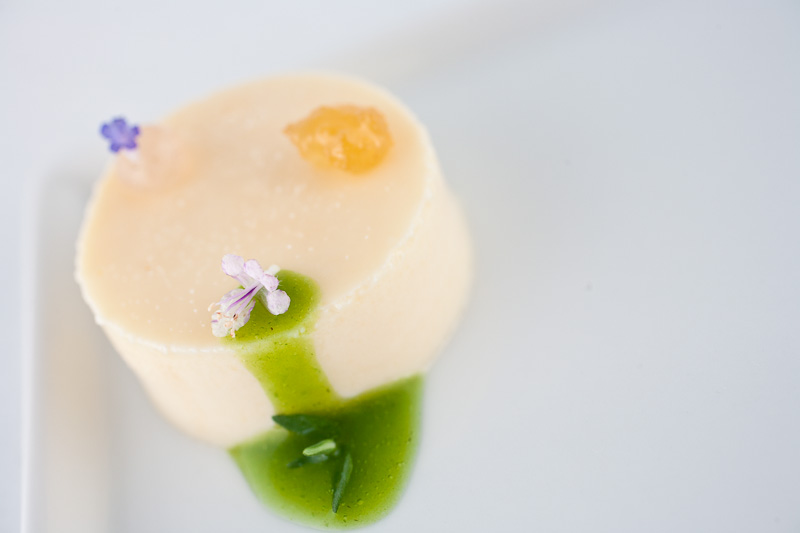
To compensate for my honey crystal failure, and to up the honey flavor (and the awesomeness factor), I included a plug from a fresh honeycomb that I extracted with a small round cutter. Guys, if you’ve never had honey fresh out of a comb, you should try it…it’s really rather amazing and stupidly delicious. Plus it’s heaps pretty as.

In the midst of my honey experimenting, I also did some thinking about what other flavors I wanted to try with my cheese. In New Zealand, one of my favorite honeys was a Wild Thyme one. Thyme seems like a natural pairing with honey, so I picked a bunch of thyme from our garden, pulled off all the leaves (tedious as hell), and blanched them.

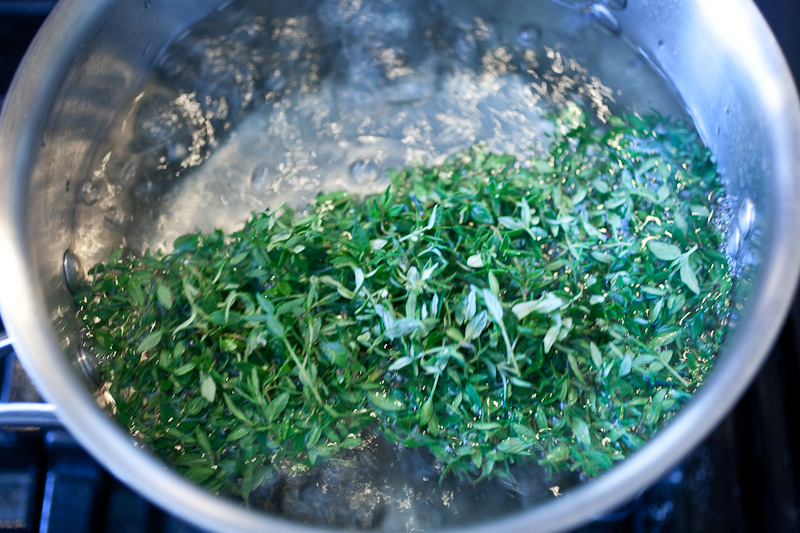
Then I put them in a blender with some sugar, salt, and ice water, and pureed them with some Ultra-Tex until the mixture thickened into a sweet thyme syrup consistency.

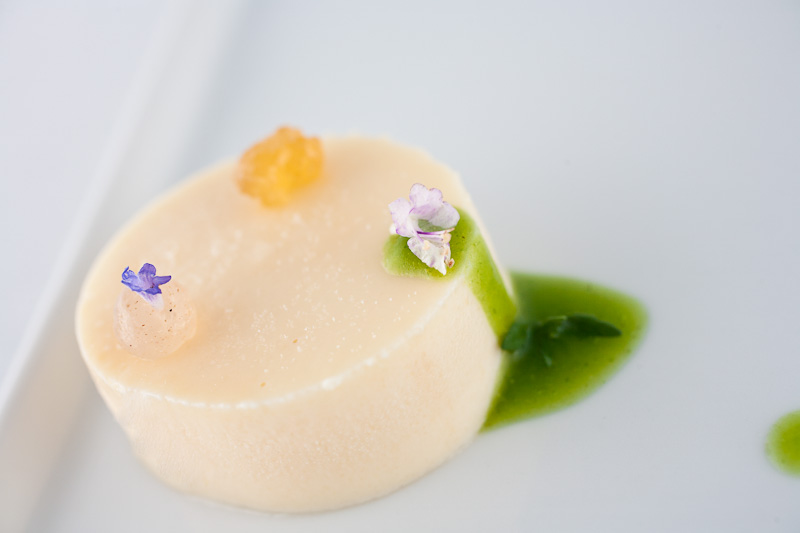
Finally, the thing that started this whole thing was when Sarah and her sister Ruth came home from touring around one day with a nice block of cheese. I’d been working with my black truffles all day, and as I was snacking on the cheese, I slipped a piece of black truffle into the mix. It was DELICIOUS. I had some fresh black truffle left over from the Explosion dish, so I wanted to try using it here. Of all the routes I could have potentially gone with this, I undoubtedly picked the most stupid. I wanted to try making black truffle jam, for which I needed black truffle oil. So I tried to make my own. I warmed some extremely-fruity extra virgin olive oil to 160F, threw in some thinly-sliced black truffle, removed from heat, and let steep for 24 hours.
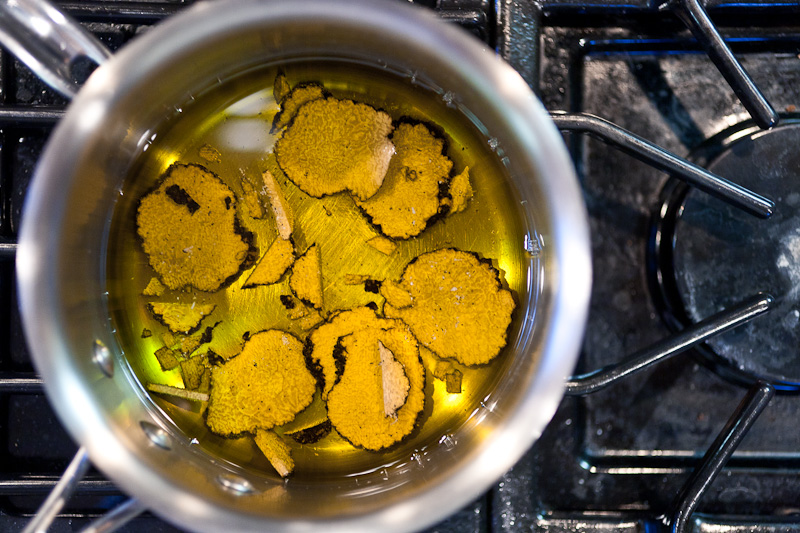
After 24 hours, my oil didn’t smell a bit truffly. I figured maybe this was because the flavors in the truffle either weren’t able to escape or weren’t fat-soluble. I read a little about making truffle oil (VERY little) and came across the concept of ‘cold extraction’, in which one just blends up stuff with the oil and then strains it. So I did that. This made a sloppy cloudy weird-tasting mess. The truffle indeed blended into the oil, but it stayed emulsified into the oil for days, looking like an odd salad-dressing and smelling a little like stale olive oil.
So I read some more. Turns out that what I was trying to do was extremely unlikely to work and also potentially a little dangerous. Truffled oils often use some part truffle (like, 1%), and another part (99%) chemical means to achieve the super-punchy (and inexpensive) flavor I was expecting. It’s also why these oils don’t taste much like their fresh counterparts. What I was trying to do is something not worth trying in the home…I’d need so many truffles to impart any flavor on the oil that it’d be prohibitively expensive, plus I’d lose most of the flavor immediately when trying to make a jam. On top of all of this, the surfaces of truffles are hard to sterilize, so the likelihood of producing something that in a few weeks would be teeming with botulism is very high.
Knowledge!
So, my truffle experiment, like my honey experiment, was a failure. I just used some store-bought truffle oil with some small dabs of the blended truffle puree mixture I’d made, mostly for visual appeal.
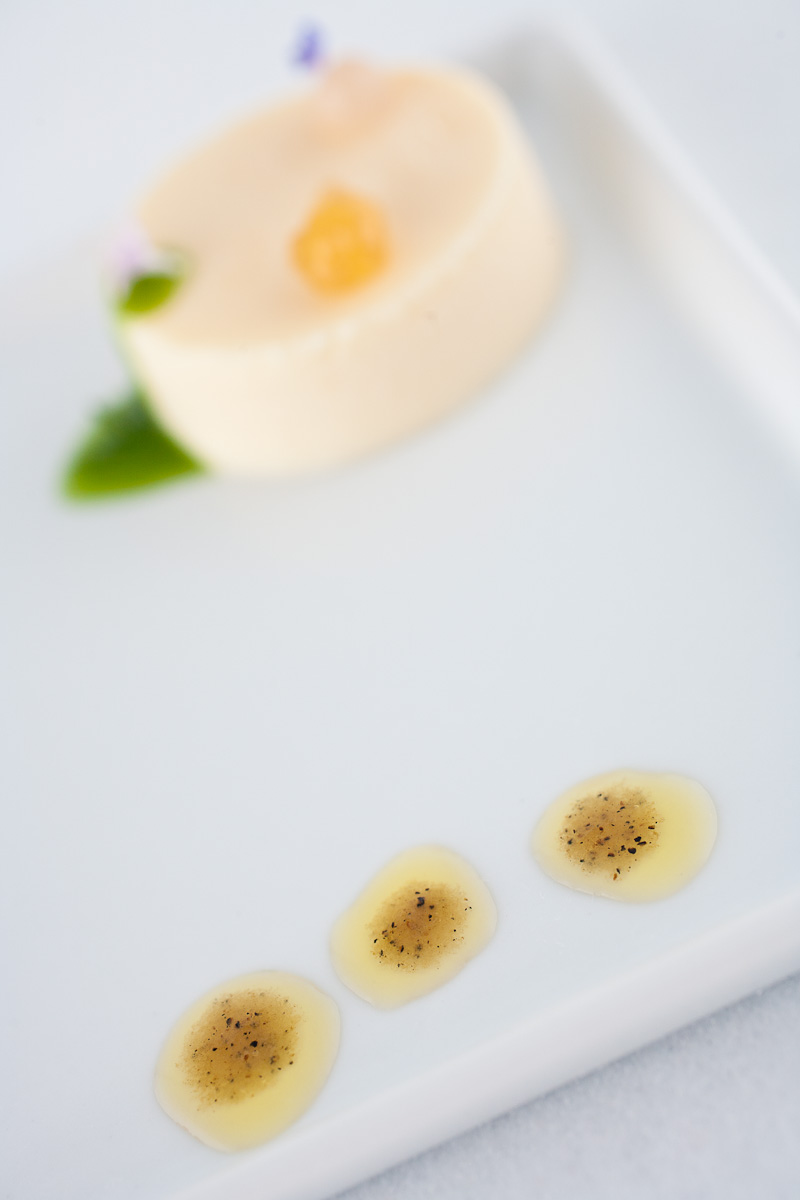
Finally, I made a pudding of lavender flowers from our garden to add another flavor note. I had some lavender honey from a farmer’s market in Emeryville last year and it was delicious, so I figured it would work here and it totally did.
Overall what I ended up with tasted very nice. Not all the way awesome, but still damn good. Sarah suggested it was missing a level of crunch…maybe it would benefit from some sort of ‘crust’ on the bottom like a tart or something. I think the truffle pairing is a solid idea, but I need a better way of incorporating it. And I love the idea of using honey crystals for good rather than viewing them as the pariah of the honey world, but it seems like the only science that I could use for that is the Science of Patience.
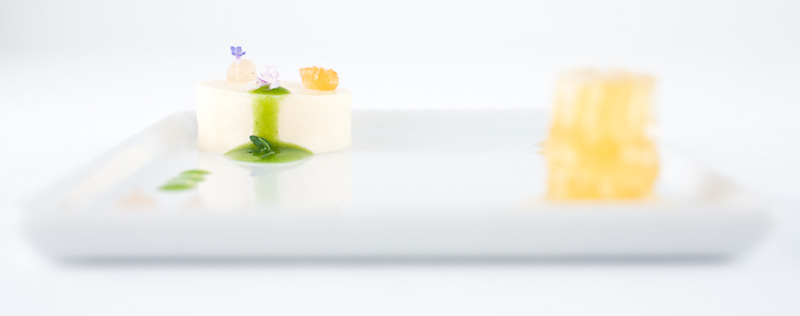
The “science of patience.” Good one! I failed that subject in high school, big time. Now it turns out to be the one thing I should have studied more.
Thanks for all the knowledge in this post. Also, now I want flavor crystals.